Lille Bakery
When you visit Lille Bakery it will instantly become clear why its visitors feel compelled—for better or for worse—to capture its magic.
Before I moved to Copenhagen from the States, my Instagram feed was bursting with imagery from the city’s thriving bakery and cafe scene—from shots of cardamom buns at Juno to the iconic, pillowy mounds of whipped butter behind the counters of Atelier September.
Copenhagen played an influential role in the community of Instagram bakers and cooks I engaged with. They shared posts from bakeries like Hart and Andersen & Maillard while expressing a desire to return to Copenhagen or visit one day. Thoughtfully curated breakfast spreads with jammy soft-boiled eggs on antique plates—like those found across the city’s cafes—became trendy for a moment. So, it’s no surprise then that I was well aware of Lille Bakery before ever knowing I’d be moving to Copenhagen.
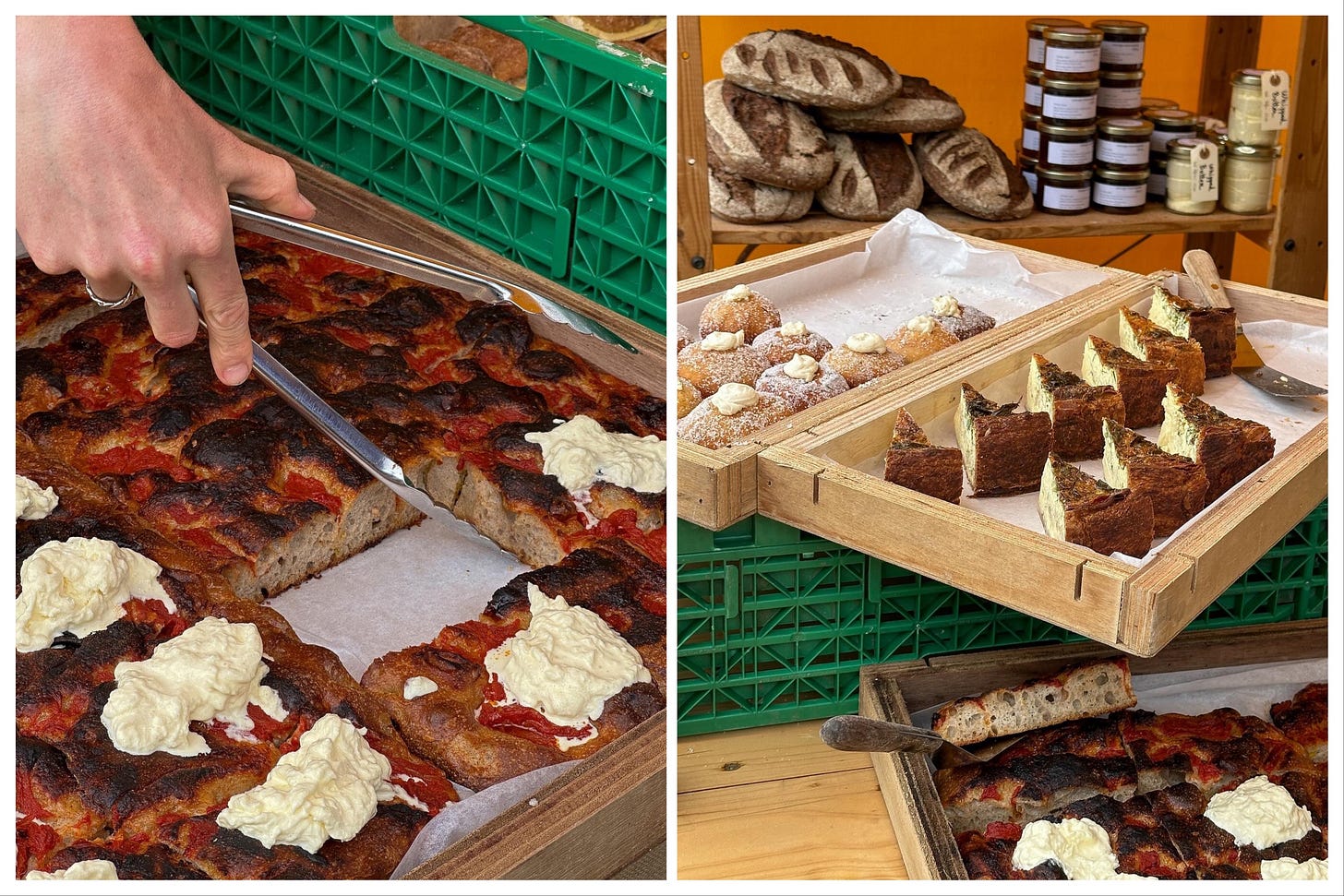
In the last two weeks, at the end of tourist season, Lille’s solo location has been tagged in 83 Instagram posts. For comparison, Hart, perhaps the most famous bakery in the city, has been tagged in 109 posts across all of its 10 locations in that same timeframe. Shots of Lille’s interiors, including its patrons and staff, make up the majority of the tagged photos.
Photographs of Lille are so popular that its staff displayed a sign kindly requesting visitors to be respectful of others while photographing the space. This sign appears in a few of those 83 tagged photos, obscured slightly by the figures and faces of customers. The last time I was at Lille, I turned around after grabbing a glass of water by the sign to be greeted by an iPhone lens that I instinctively stared directly into—a common occurrence for the bakery’s staff, who are filmed and photographed incessantly. Browsing through those 83 photos, it’s clear that the work of service industry professionals is a novelty to many tourists, no matter how mundane the task.

This week, Lille took the message to Instagram, paralleling the efforts of Edinburgh’s Lannan Bakery, who similarly requested that customers respect bakery staff and fellow patrons when photographing their visits last June. Lannan’s post still exists, but its comments have since been disabled—a decision I don’t fault Lannan for, as quite a few comments were frustratingly in opposition to their proposals (one commenter, in a nonsensical argument that is cemented in my memory, argued that the existence of photographs of working staff on the bakery owner’s Instagram invalidated the new policy).
It’s not hard to empathize with the need for respect in shared spaces—especially in an intimate setting like Lille Bakery, which has a completely exposed kitchen and working space. It’s common to see tourists take turns climbing the staircase to the bakery’s second floor to get a shot of the kitchen and queue below (an image that is on Lille’s homepage). Admittedly, I did the same on my initial visit and have since deleted the image from Instagram. Maybe it’s this shared practice that normalizes more invasive behaviors, like tourists holding their phones over the kitchen counters to film workers up-close as they prep food or sip coffee.
It is a privilege to experience an open kitchen in a place as wondrous as Lille. This look behind the scenes (which Lille’s bakers, chefs, waitstaff, and dishwashers have no control over) should be treated with the same sanctity as a neighbor’s welcoming kitchen. Much is lost when a visit to a bakery or restaurant is reduced to an Instagram or TikTok post—the humanity and privacy of staff, for one—but I am by no means innocent in this objectification.

In July I had the privilege of interning at one of the best bakeries in the city. One day I happened upon a video of myself and a new pastry chef (whom I now consider a dear friend) filmed through the glass windows that expose the bakery’s hectic production space to visitors. The video was created by a “foodie” account with over 20,000 followers. It rated the top bakeries in Copenhagen, a common TikTok and Instagram theme that favors driving engagement and freebies over contributing substance to an over-saturated space.
The lack of control over where images of my face and body ended up made me feel sick. My friend, whose face was most featured in the video, wasn’t thrilled but didn’t share my near-abject disgust. So I protectively felt it for her, wondering how a stranger could feel so comfortable filming working people without their knowledge. Like the open kitchen of Lille Bakery, the glass between her and the stranger wasn’t a tacit invitation to document her workday.
Anyway…
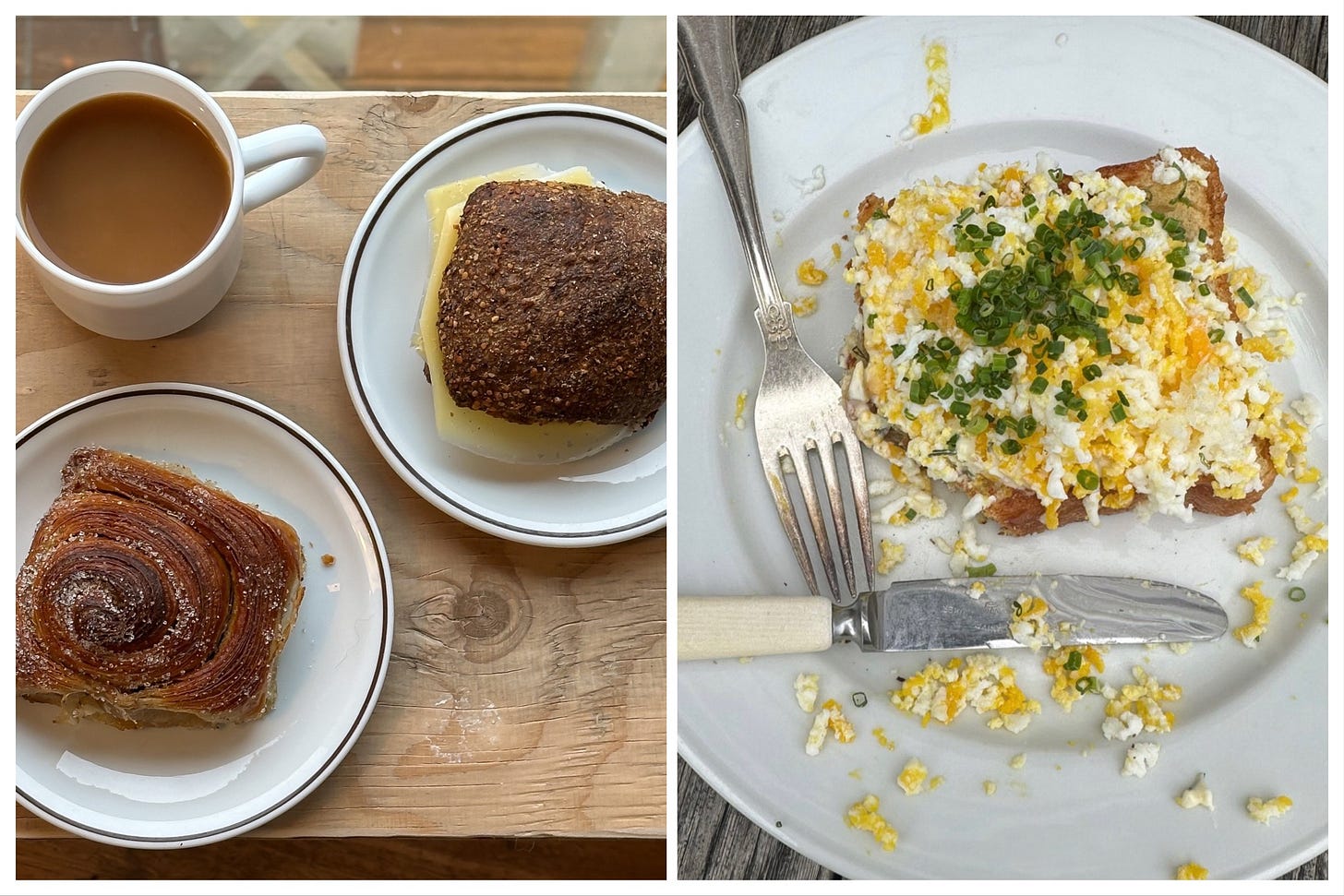
Copenhagen’s culture of slow food is antithetical to the constant process of content creation that occurs in its bakeries, cafes, and restaurants. Lille is endlessly beautiful and photogenic—alluring features that often overshadow the bakery’s ethos of working with ancient grains and in harmony with nature, which includes close partnerships with local wheat producers Brinkholm, Kornby Mølle, and Vild Hvede. This relationship with local, sustainable Danish millers is one of the things that really makes Lille special. It’s because of this partnership that you will find some of the most unique and inventive bakes in the city on Lille’s shelves: jammy einkorn cookies, quinoa cakes, and rustic spelt cakes to name a few.
For much of the year, Lille Bakery is a reprieve from Copenhagen’s gloomy weather. Its open interiors capture and reflect the little light shining on Refshaleøen outside of the summer months, creating a dreamy atmosphere that’s hard to leave once your meal ends. It is a worthy setting for the beautiful bakes and lunch dishes coming out of Lille’s kitchen.
One of my fondest memories from Lille took place last Easter weekend, when I found myself alone at home, scrolling through Instagram. Lille posted to their stories that they had fresh hot cross buns on special. I put on my raincoat and made the 40-minute trek to the bakery in the rain, joining countless others who had the same idea. I squeezed into a seat at a communal table and slowly enjoyed my hot cross bun, watching the bakers pull tray after tray of steaming orange-scented buns from the ovens. This was when I really fell in love with Lille Bakery.
As much as I adore Lille, it wasn’t always this way. The two signature items I now prize the most from them were originally my first disappointments. My first bolle med ost (bun with butter and cheese) was served on a gummy, chewy bun—a common danger with wholegrain bakes. The blomster bun (flower bun), a pastry I now cherish dearly, lacked the crisp texture I expected in a laminated bun.
I’m not sure what changed exactly (though I have some theories), but the blomster bun is my perfect morning bun and I recently stocked up enough sourdough buns to have bun and cheese at home every day of the week. Some of my favorite pastries have visible amounts of sugar balanced by their less visible counterparts—Københavns Bageri’s nontraditional, coffee-forward take on brunsviger, for example. The dried flower blend in the blomster bun adds a slightly savory fragrance and taste to the sweet, buttery pastry. It is heavenly.
Prioritizing the use of wholegrain flour in breads and pastries is a challenging feat, as it is far more difficult and unpredictable to work with compared to highly refined white flours (which typically produce more food waste from processing). Lille Bakery’s mastership of grains is the reason bakers and chefs from around the world come to Copenhagen to learn their ways. Lille has shaped the way I bake at home, influencing me to experiment with spelt, buckwheat, and rye flours. It is rare that I leave the bakery uninspired.
Yes, Lille Bakery is the most beautiful bakery in Copenhagen, but it is also one of the driving forces promoting sustainable practices and ethical consumption in the city’s food scene. You can read more about Lille’s mission and their partners on their website. It’s from this principle and the creativity of Lille’s hardworking staff that the most interesting lunch dishes and pastries in the city are born.
What to order at Lille Bakery
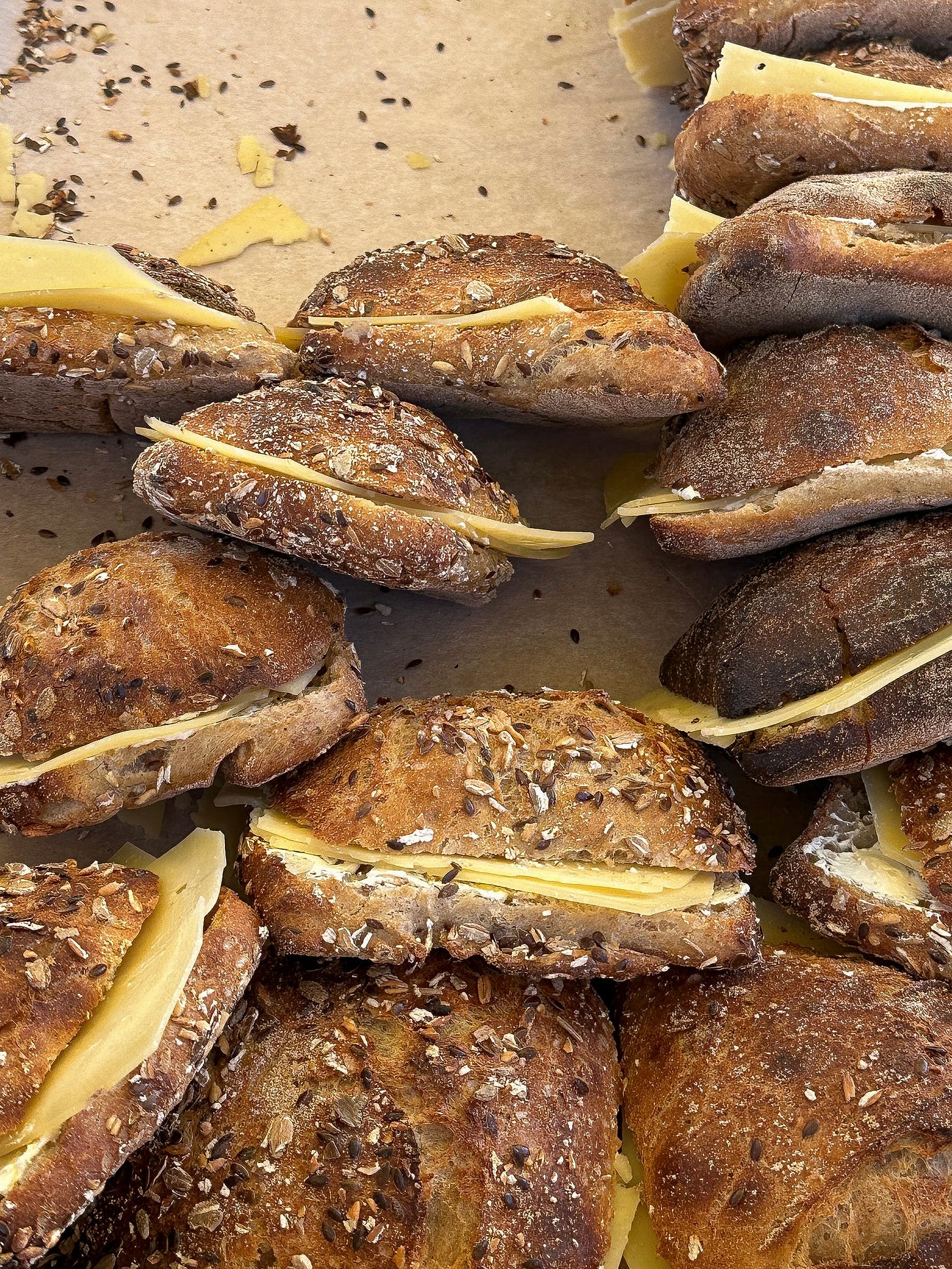
The bun with butter and cheese at Lille has become one of my favorites in the city. My ideal bun is tender on the inside with an open crumb structure to catch swipes of soft, whipped butter. It has a hearty exterior that is more crisp than chewy, possessing a shortness of sorts. This bun is just that, but even better since it has thin slices of slightly funky Søbo cheese from Søtofte Gårdmejeri, an organic dairy farm in Ringsted that supplies Lille.
The blomster bun is a laminated morning bun filled with dried flowers, butter, and sugar. It tastes just as romantic as it sounds. The dried flowers lend a slightly earthy flavor that is more savory than floral—like the varieties of herbs de Provence that include lavender.
The honey toast is a new addition to the pastry shelves that I hope sticks around forever. Its tender, caramelized brioche base is topped with cream and a changing selection of Danish seasonal fruits. It is perfectly balanced and a testament to the pastry and bread skills of Lille’s chefs.
Refshalevej 213B, 1432 København
Open from 8-5, Wednesday-Sunday
Closed Monday and Tuesday
You can also find Lille at select Grønt Marked locations








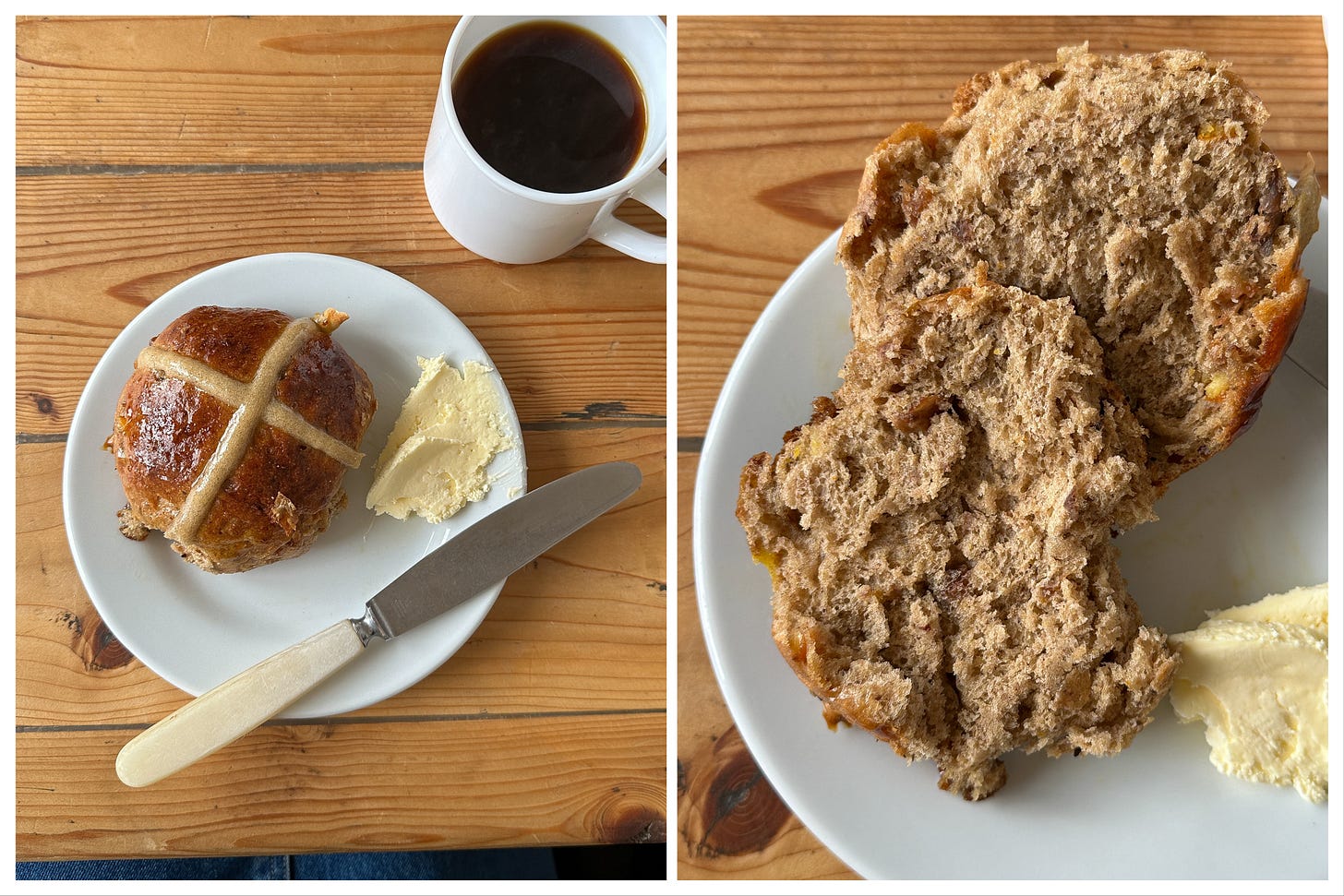

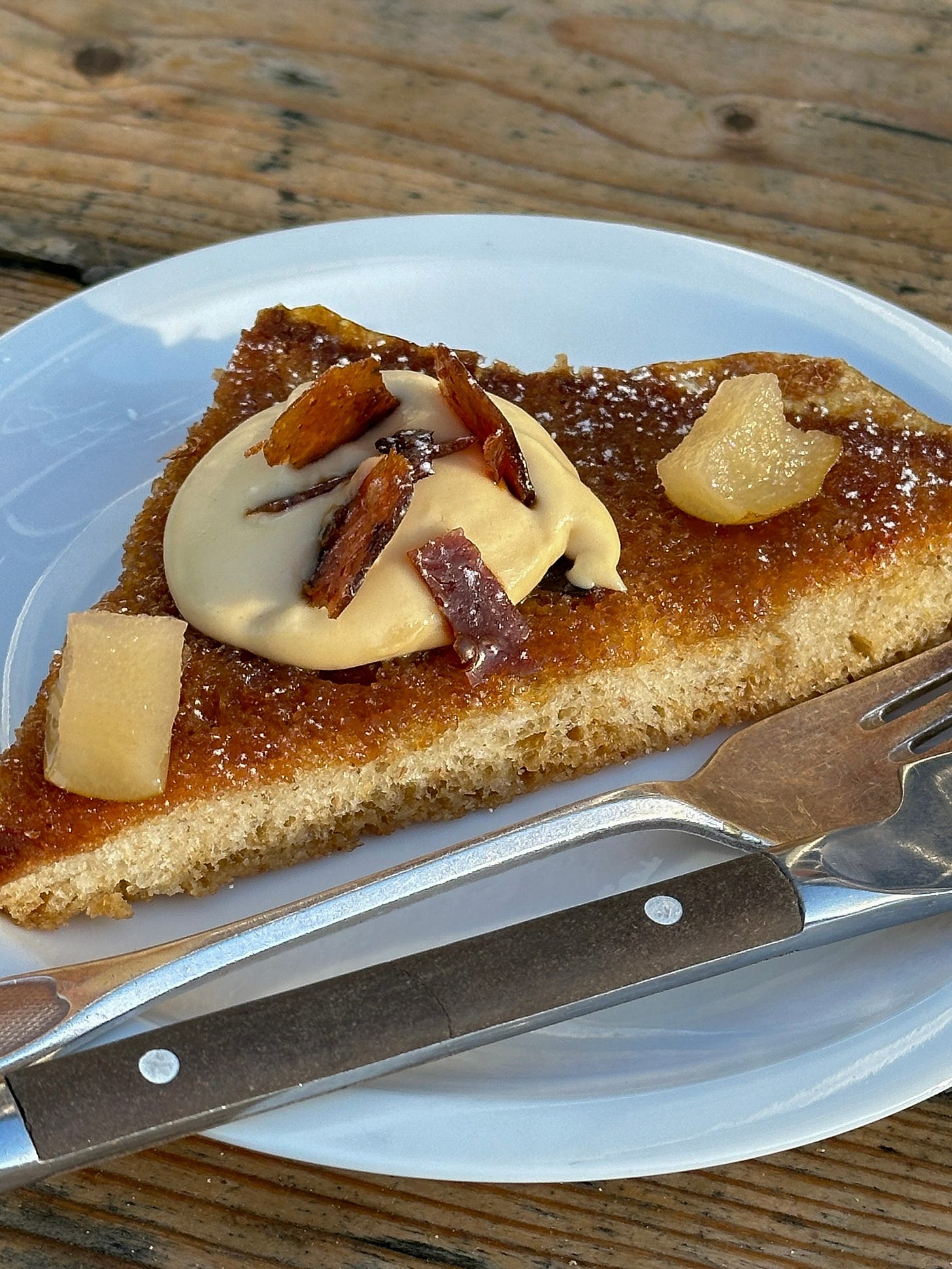
I have worked in an open bakery and I cannot express the irritation when someone has a camera right in your face whilst you are shaping bread (without even asking first; because I am more than happy for them to film the process, but I don't look particularly my best when I'm covered in muck and flour and have been running around for 12 hours). Ps, wonderful post, I myself have not been to Copenhagen yet but hear good things about the bakery scene!
what a beautiful read—particularly your trek for the hot cross bun which I appreciate a lot. xx